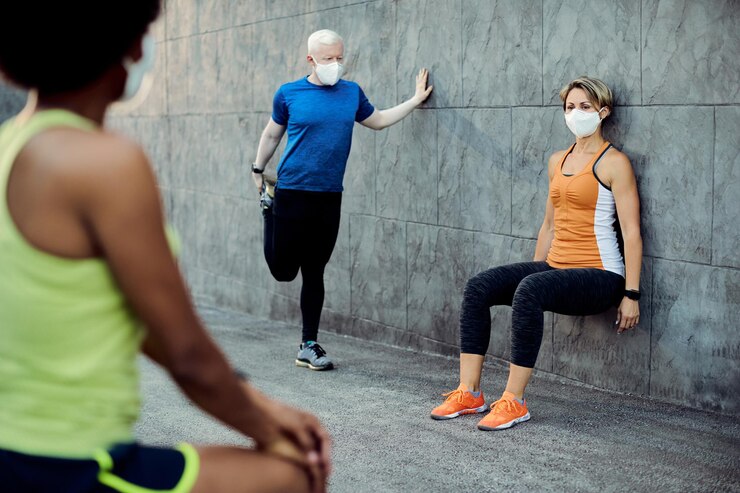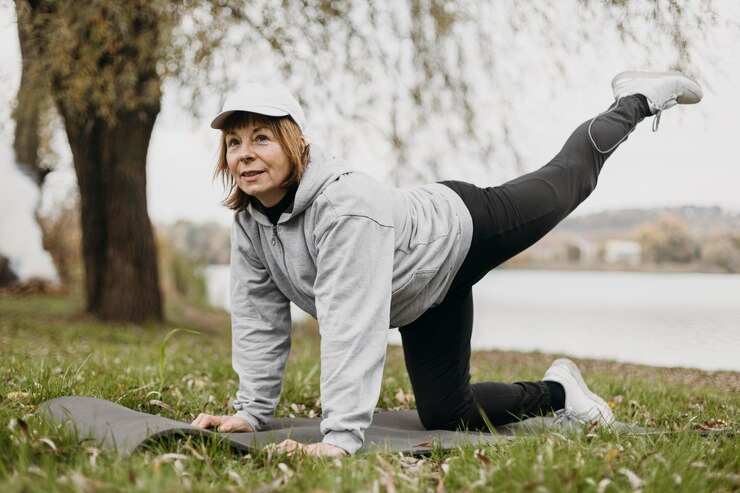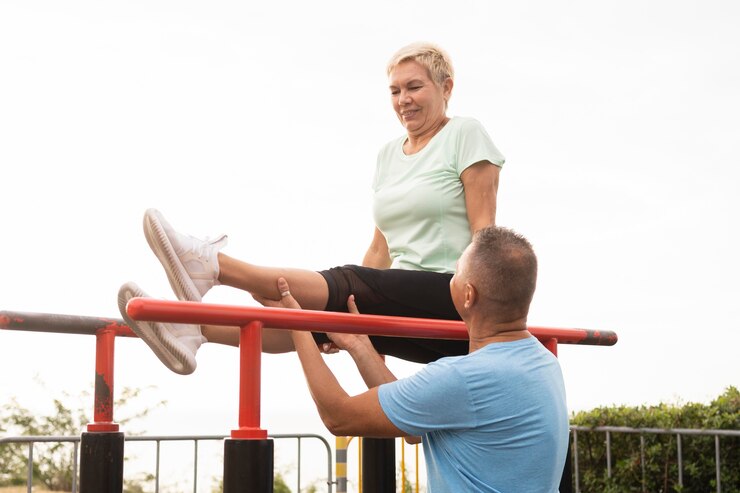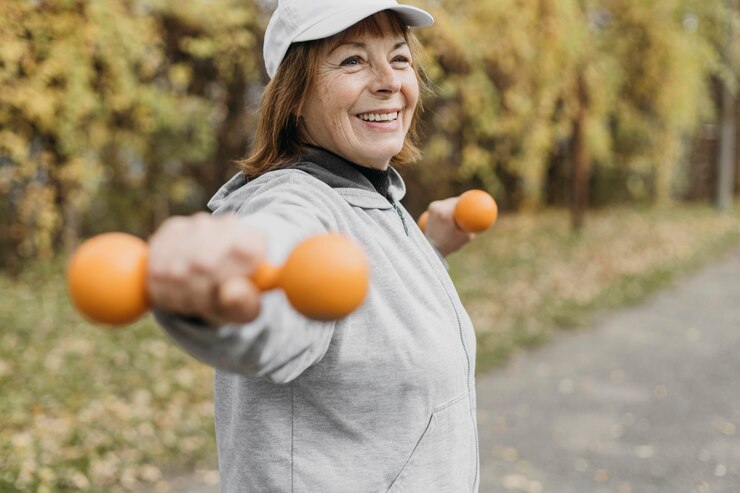The Ultimate Guide to Senior-Friendly Workouts You Haven’t Tried Yet

Staying active is one of the most important things seniors can do to maintain their health and independence. However, it’s easy to fall into a routine of the same old exercises, like walking or light aerobics. While these are great, plenty of innovative, senior-friendly workouts are just as effective—some of which you might not have tried yet. This guide will introduce you to new exercise ideas perfect for seniors, offering variety and fun while keeping you fit and active.
The Importance of Exercise for Seniors

Exercise is essential for seniors and is not just about staying in shape. Regular physical activity helps maintain mobility, balance, and cognitive health. Let’s explore the specific reasons why staying active is critical as you age.
a. Physical Benefits of Regular Exercise
- Improved mobility and balance: Exercise strengthens muscles and improves coordination, reducing the risk of falls and injuries.
- Prevention of age-related conditions: Regular activity helps fight against muscle loss (sarcopenia) and bone weakness (osteoporosis), ensuring you stay strong and agile.
- Cardiovascular health: Exercise reduces the risk of heart disease, stroke, and high blood pressure.
b. Mental and Emotional Benefits
- Boosts cognitive function: Exercise increases blood flow to the brain, helping to preserve memory and thinking skills.
- Reduces anxiety and depression: Physical activity releases endorphins, which improve mood and reduce stress, anxiety, and depression symptoms.
- Fosters social interaction: Group exercises provide opportunities to connect with others, promoting emotional well-being.
c. Long-Term Wellness
- Maintaining independence: Exercise helps keep you mobile so you can continue performing daily tasks without assistance.
- Prolongs life: Studies show that regular physical activity extends life expectancy, providing a higher quality of life in your senior years.
Understanding Senior-Friendly Workouts

When choosing exercises, it’s important to find ones that suit your fitness level and consider any mobility issues or joint pain. Senior-friendly workouts prioritize low impact, flexibility, and gradual progression to prevent injuries.
a. What Makes a Workout Senior-Friendly?
- Low impact: Exercises should be easy on the joints and focus on slow, controlled movements.
- Adaptable to different fitness levels: Senior-friendly workouts can be modified to suit varying abilities, whether you’re a beginner or more experienced.
- Focus on balance and strength: These workouts help improve balance and build strength to prevent falls and maintain independence.
b. Common Myths about Senior Fitness
- Myth 1: Seniors should avoid intense workouts: While high-intensity exercises may not suit everyone, seniors can still engage in challenging workouts that match their abilities.
- Myth 2: Only light exercises are safe: Many are safe and effective, offering more variety and engagement than just light walking.
Innovative Senior-Friendly Workouts You Haven’t Tried Yet

If you’re ready to switch up your routine and try something new, here are some lesser-known but highly effective workouts that are perfect for seniors.
a. Chair Yoga
- What it is: A gentle form of yoga while seated in a chair, focusing on stretching, balance, and relaxation.
- Benefits: It improves flexibility and posture and reduces joint stiffness. It’s ideal for seniors with mobility issues or arthritis.
- How to get started: Begin with basic poses like seated forward bends and gentle twists. Look for online chair yoga tutorials designed for seniors.
b. Water Aerobics with Resistance Bands
- What it is: A low-impact water workout combining aerobic and strength training using resistance bands.
- Benefits: The water’s buoyancy reduces joint strain while adding resistance bands builds strength. This exercise is great for seniors with arthritis or joint pain.
- How to get started: Find a local pool offering water aerobics classes or try doing simple exercises in the water, like water walking or leg lifts with bands.
c. Nordic Walking
- What it is: Walking with specially designed poles that help engage the upper body.
- Benefits: Burns more calories than regular walking, improves posture, and is easier on the joints, making it ideal for seniors with knee pain.
- How to get started: Invest in a pair of Nordic walking poles and start with short, easy walks. Many cities offer Nordic walking clubs for seniors.
d. Pilates for Seniors
- What it is: A form of exercise that focuses on building core strength, improving flexibility, and enhancing balance through controlled movements.
- Benefits: It is excellent for improving posture and strengthening the core muscles that support the spine. It’s low-impact, making it great for those with back issues.
- How to get started: Look for Pilates classes for seniors or try simple at-home exercises like pelvic tilts and leg lifts.
e. Functional Fitness Training
- What it is: Focuses on exercises that mimic daily activities, like bending, reaching, and lifting.
- Benefits: Helps improve strength and mobility for everyday tasks, preventing falls and improving independence.
- How to get started: Incorporate exercises like squats, lunges, and overhead reaches into your routine. Modify as needed to suit your fitness level.
f. Tai Chi with a Twist
- What it is: A modern take on Tai Chi, incorporating light weights or resistance bands to enhance strength.
- Benefits: Improves balance, flexibility, and mental focus while building muscle strength.
- How to get started: Learn basic Tai Chi moves and incorporate light resistance work using weights or bands for added difficulty.
Adapting Workouts to Your Abilities

Adapting exercises to your current abilities is essential, especially if you have mobility issues, chronic pain, or injuries.
a. How to Modify Exercises for Limited Mobility
- Seated or supported options: Use a chair or wall for support during balance exercises, or do seated versions of workouts like chair yoga or seated strength training.
- Gentle alternatives: Opt for water-based exercises or low-impact cardio, like cycling or walking, which place less strain on joints.
b. Listening to Your Body
- Avoid pushing through pain: If you feel discomfort during a workout, stop immediately and consult with your doctor if necessary. Modify exercises to ensure they are comfortable for you.
c. Incorporating Rest and Recovery
- Give your body time to recover: Alternate between active days and rest days to allow your muscles to heal and prevent overuse injuries. Stretching or light walking on rest days can aid recovery.
Getting Started: Tips for Safe and Effective Exercise

Starting a new workout routine can feel intimidating, but it can be safe and enjoyable with the right approach.
a. Consult with a Healthcare Provider
- Check with your doctor: Before beginning any new exercise regimen, especially if you have pre-existing health conditions, getting clearance from your healthcare provider is important.
b. Start Slow and Build Gradually
- Ease into it: Begin with short, low-intensity sessions and gradually increase the time and intensity as you become more comfortable.
- Focus on form: Proper form is crucial for preventing injuries, so pay attention to technique and consider working with a trainer for guidance.
c. Staying Consistent
- Set a schedule: Commit to exercising several times a week to see the best results. Consistency is key, so find activities you enjoy to make it easier to stick with your routine.
Incorporating Social Interaction in Workouts

Exercising with others boosts motivation and fosters social connections, which are essential for emotional well-being.
a. Joining Senior Fitness Classes
- Stay motivated with group exercise: Many senior centers and community gyms offer classes tailored to older adults, like water aerobics, chair yoga, or Tai Chi.
b. The Importance of Accountability Partners
- Find an exercise buddy: Having a workout partner can help you stay consistent, provide support, and make exercise more enjoyable.
c. Volunteering and Active Hobbies
- Get involved in the community: Participate in activities that keep you moving while giving back, such as community clean-ups or assisting with gardening projects.
Conclusion
Exercise is key to a long, healthy, and independent life. By exploring innovative and senior-friendly workouts like chair yoga, Nordic walking, and functional fitness, seniors can enjoy various fun and engaging ways to stay fit. These exercises, tailored to different fitness levels, improve physical health and enhance mental well-being and social connections. Start trying these new workouts today, and experience the benefits of staying active in your golden years!





